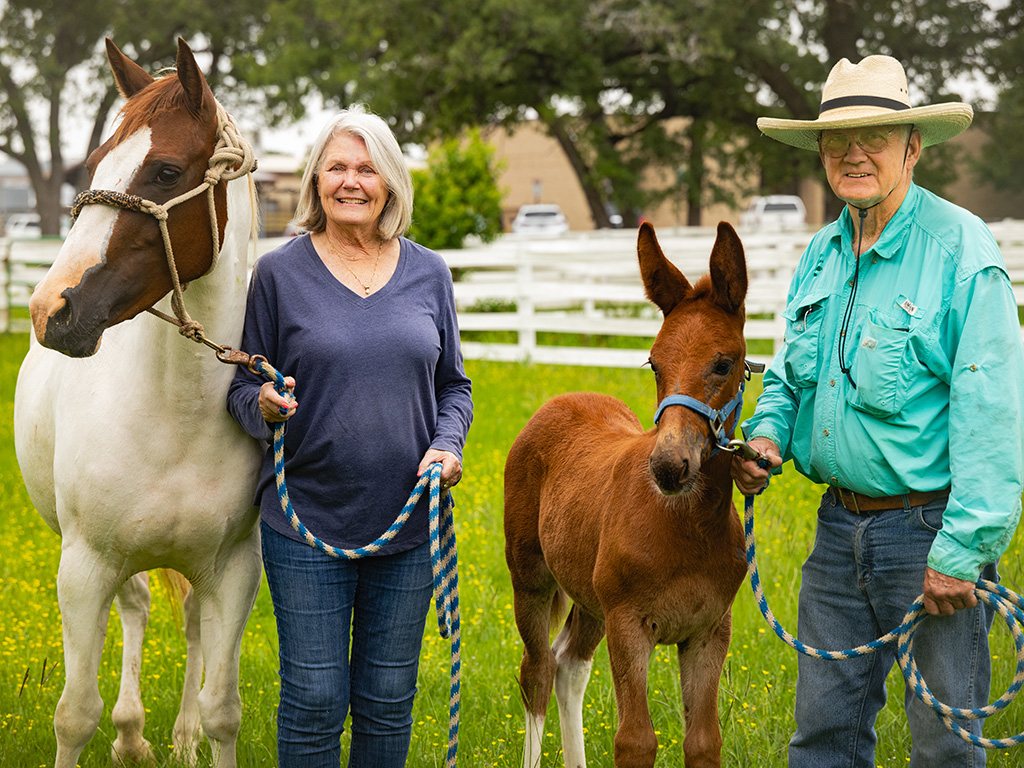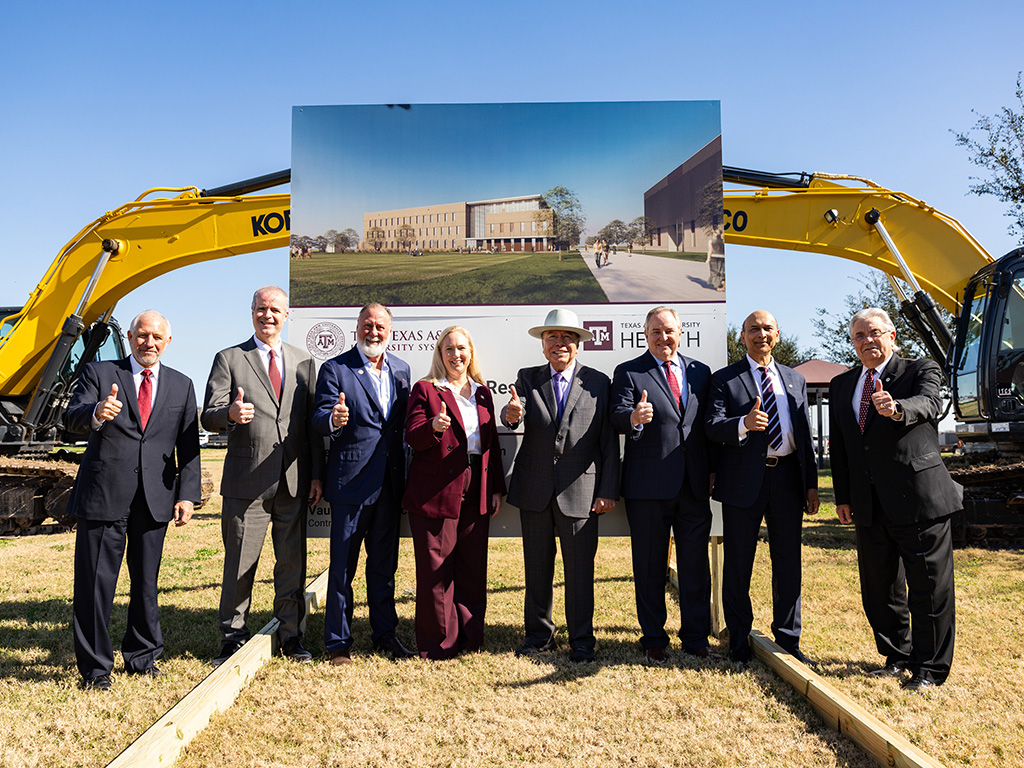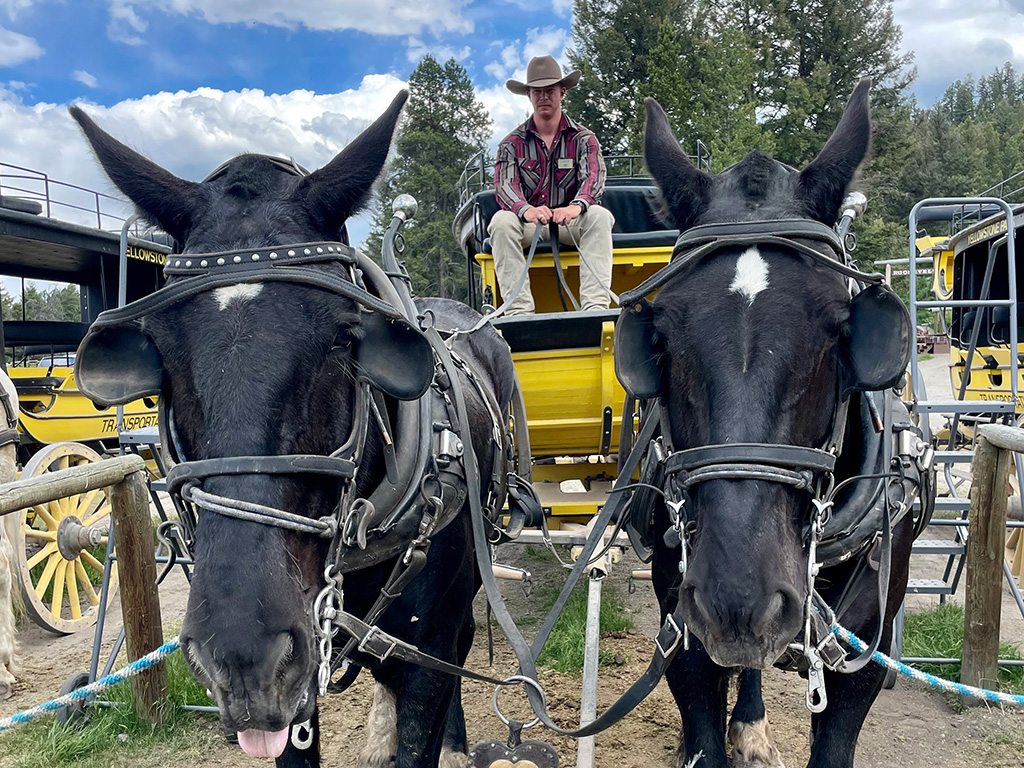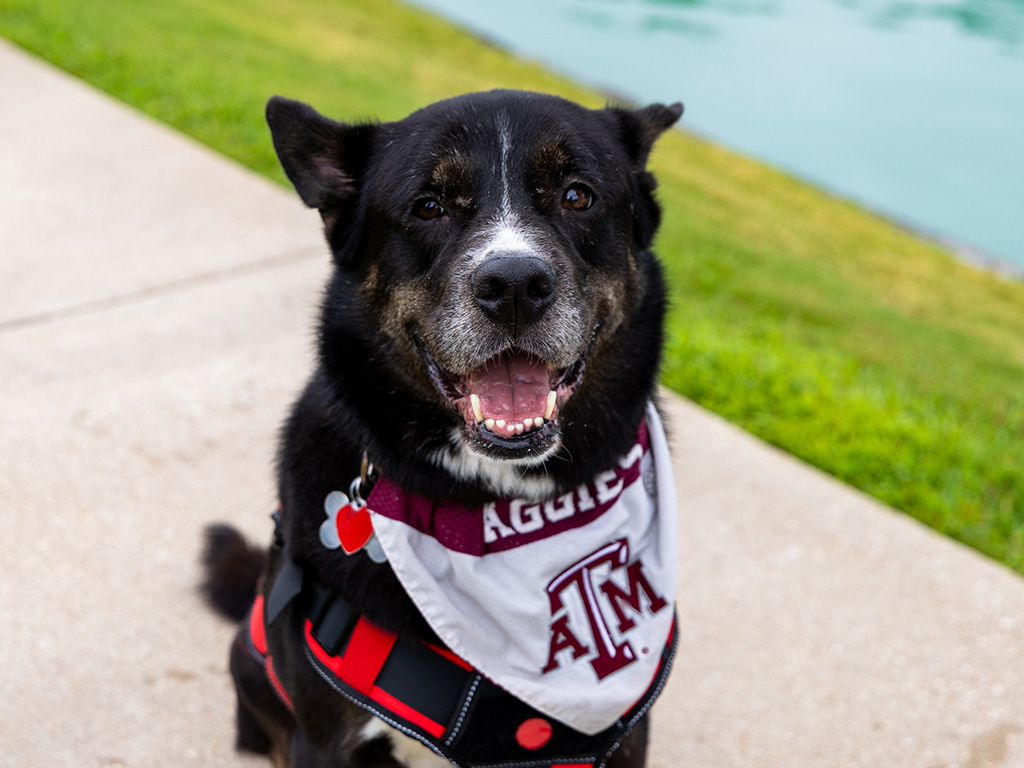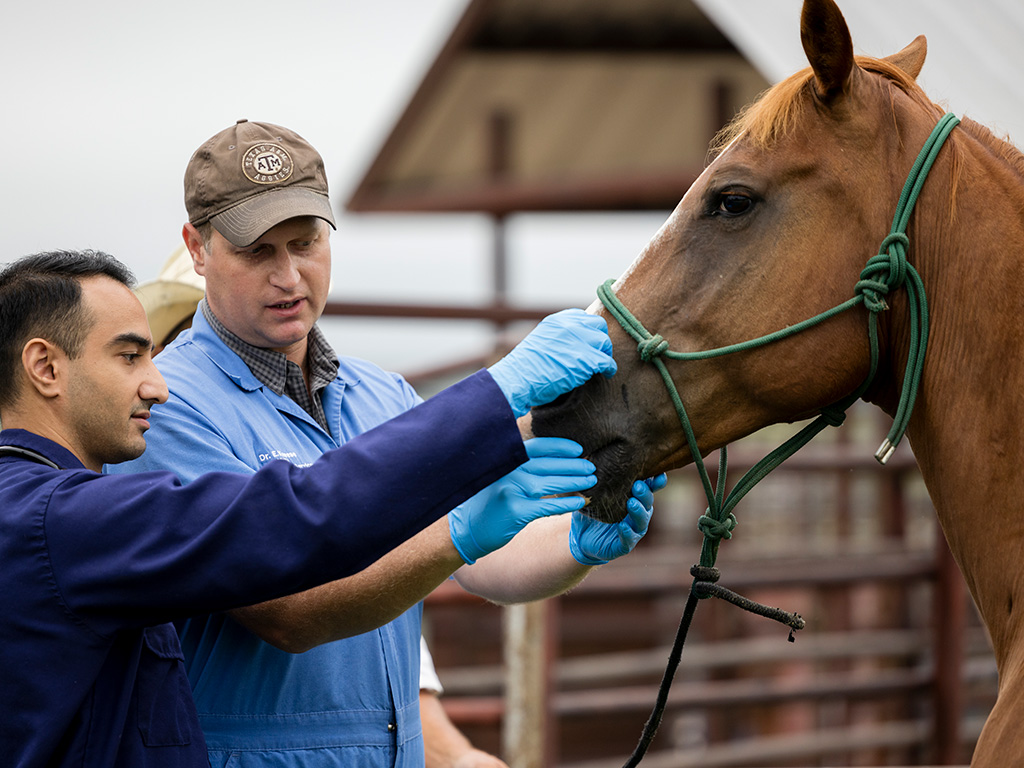VMBS Equine Specialist Leads The Way In Innovative Teaching, Patient Care
Story by Megan Bennett, VMBS Marketing & Communications
Veterinarian Dr. Kati Glass is revolutionizing equine medicine at Texas A&M through her endeavors in veterinary education and innovation.
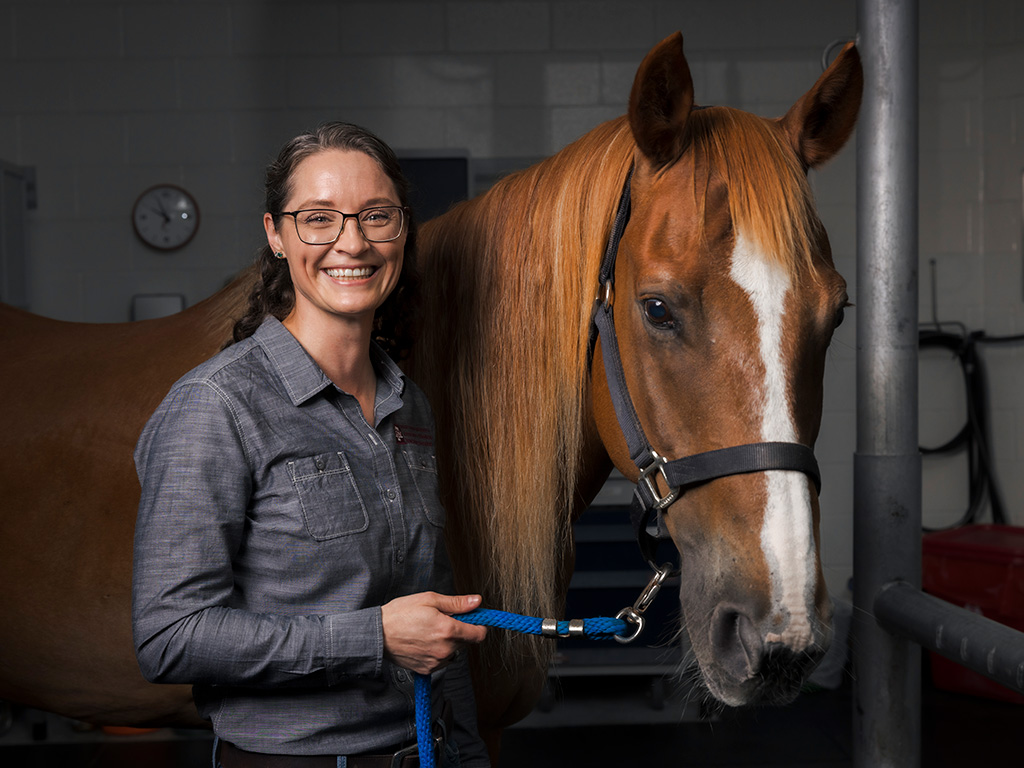
Only seven years into her career as a faculty member at the Texas A&M College of Veterinary Medicine & Biomedical Sciences (VMBS), Dr. Kati Glass ’09, ’12 has established herself as an international leader in equine orthopedic surgery.
As a clinical associate professor in the VMBS’ Department of Large Animal Clinical Sciences, Glass maintains a busy schedule treating patients at the Large Animal Teaching Hospital (LATH), teaching students from all four years of the Doctor of Veterinary Medicine (DVM) curriculum, and conducting interdisciplinary research to improve the future of equine medicine and surgery.
At the same time, she also teaches an international audience of veterinarians as a faculty member for AO (Arbeitsgemeinschaft für Osteosynthesefragen), an organization focused on improving orthopedic medicine for both people and animals, and serves as one of three members of the international AO Large Animal Expert Group, which supports the development of novel orthopedic implants and surgical techniques.
Through it all, Glass is driven by her desire to enhance the future of the equine veterinary industry as a whole and provide a tangible benefit to every patient, client, and student who crosses her path.
Supporting Patients And Students
Glass has called Texas A&M her home for almost the entirety of her professional career.
After graduating from the VMBS with a bachelor’s degree in biomedical sciences in 2009 and a DVM degree in 2012, she briefly left Texas to complete a rotating internship at the Equine Medical Center of Ocala in Florida before returning for a surgical residency at the LATH.
In 2017, Glass joined the VMBS faculty and quickly moved up the ranks to her current position, in which she is the primary clinician for both the LATH’s Equine Orthopedics and Equine Sports Medicine & Imaging services.
While maintaining a full clinical schedule caring for LATH equine patients, she has also treated orthopedic concerns in farm animals, donkeys, camels, and even a polar bear.
“When I’m on clinic duty or have patients in the hospital, my responsibility to each patient and client continues no matter the day of the week or hour of the day,” she said. “It’s truly an incredible experience to see the hard work and care through challenging circumstances result in positive outcomes, comfortable lives, and return of athletic ability.”
Whether she’s performing complicated orthopedic surgical procedures or evaluating lameness in performance horses, Glass uses every patient as an opportunity to teach the students and veterinarian trainees around her.
“As a committed lifelong learner myself, it is rewarding to be able to work in an environment dedicated to education. Every case I see has veterinary student, intern veterinarian, and resident veterinarian involvement, allowing each patient to be a teaching moment at many levels,” she said.
In her pre-clinical classes and laboratories, first- through third-year veterinary students learn about topics like the musculoskeletal system and how to perform lameness exams, preparing them for their fourth-year clinical rotations and careers.
“I have a unique opportunity to work directly with students throughout their education, directly observing their growth in knowledge and skill set,” Glass said. “This allows me to reflect on the impact educators can have by investing in students and helping them experience the practice of equine medicine.
“We are experiencing a significant shortage of equine practitioners; only a small percentage of graduating veterinarians are going into equine practice, while a high number of veterinarians are retiring or leaving the field,” she said. “For this career path to continue, and for horses and other large animals to continue to have access to veterinary care, we have to excite and encourage these young veterinarians while helping them build confidence, knowledge, and a capable skill set to go into this field. I’m in a unique spot to be able to help people find their passion and confidence on that path.”
Improving Equine Care
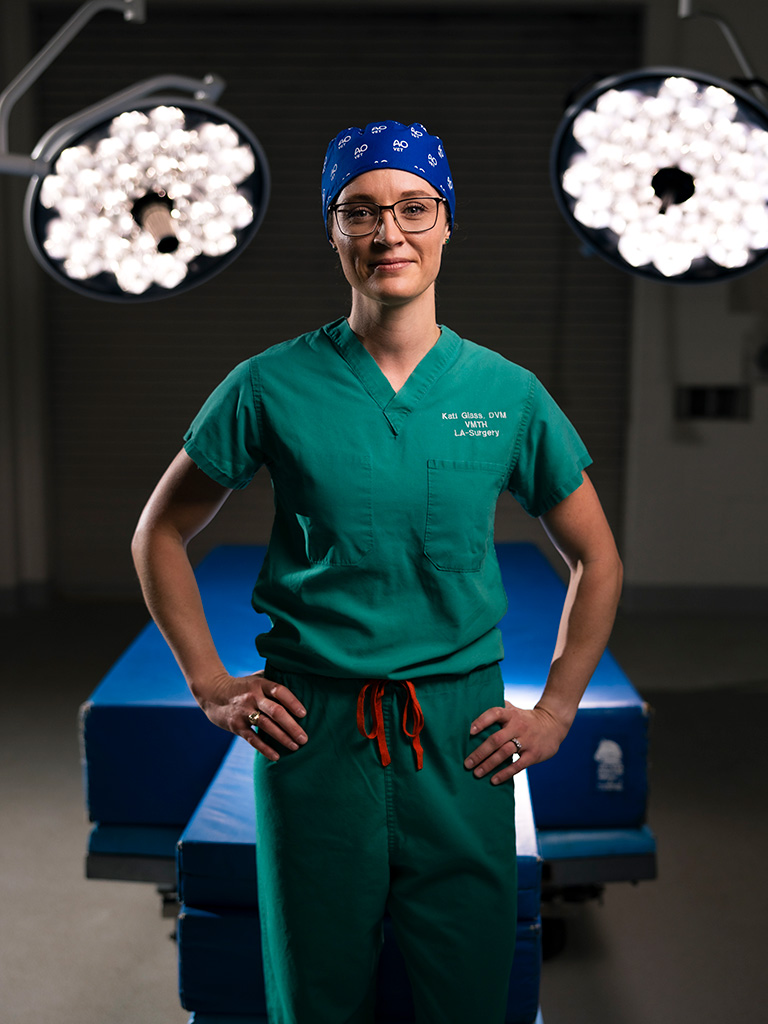
Glass’ position at the LATH also allows her to treat future patients through collaborative research.
In one recent series of projects, she worked with Dr. Jessica Leatherwood, associate professor in Tarleton State University’s Department of Animal Science, and Dr. Amanda Bradbery, assistant professor in Montana State University’s Department of Animal and Range Sciences, to investigate joint health in young performance and exercising horses.
“We are investigating the effects of stressors on the young horse — whether that be exercise, medications, or inflammation of joints — and how that affects joint health,” Glass said. “We are hopeful that these investigations will help improve how we care for young athletic horses and direct our treatment options for horses with joint pain and inflammation.”
On the orthopedic surgery side, Glass is involved in projects investigating novel implants that have the potential to improve how veterinarians perform surgeries such as fracture repair and joint fusion.
For these interdisciplinary projects, Glass is mentoring surgical residents and working with the Texas A&M College of Engineering’s Biomechanical Environments Laboratory, which involves engineering and pre-medical students, as well as those from Texas A&M’s new School of Engineering Medicine.
One project involves studying a new screw design.
“There has not been a major technologic advancement in surgical screw design in decades. Recently, a novel thread design has been introduced in both human and small animal surgery with good success,” she said. “Because of the unique challenges of our patients’ size and the requirement that they stand and walk essentially immediately after surgery, improvements in implant performance have the potential to expand surgical possibilities in large animal orthopedic surgery. We are investigating the performance of the new design in horse bones, at sizes made specifically for our large animal patients.”
The team is also using this technology to develop a new implant to treat lower hock osteoarthritis, a common condition in sport horses, by fusing the lower hock joints.
“This is particularly exciting because lower hock joint osteoarthritis is very common, often performance limiting, and can cause severe pain. Currently, treatment options have limitations and are only sometimes successful,” Glass said. “We hope to provide a solution that’s more cost-effective, reduces complications, and allows horses to fuse these joints more predictably, so that they can stay in performance.
“It is exciting to be able to collaborate with industry partners, biomechanical engineers, and human medical professionals on implants that could impact the future of surgical care,” she said.
Reaching An International Audience
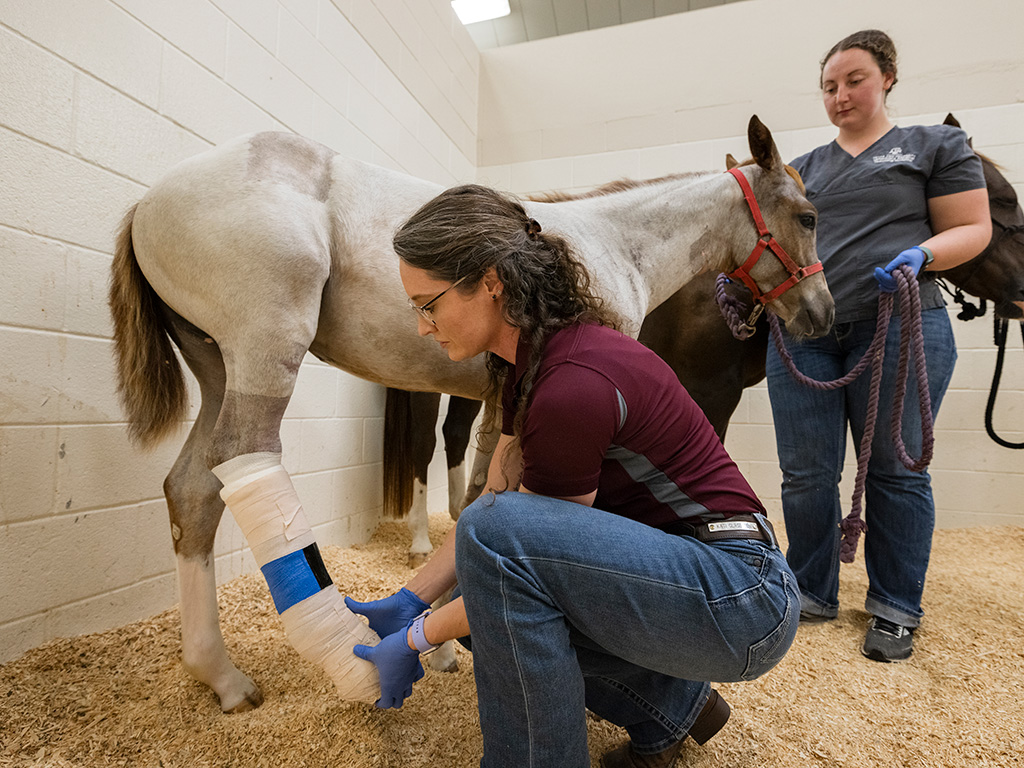
Glass also continues supporting the future of equine medicine and surgery through her role in the AO, which seeks to improve orthopedic outcomes and techniques through education, innovation, and research.
As an AO faculty member, Glass is active in educating other orthopedic surgeons at the national and international levels.
Courses held in the United States are attended by surgery residents in training, practicing surgeons, and international participants. The AO also hosts training and networking opportunities overseas.
“This past December, I was invited to participate as a faculty member in an advanced course on equine arthrodesis and fracture fixation held in Davos, Switzerland,” Glass said. “The course was attended by a diverse international group of participants and included lecture and labs on the newest orthopedic surgical techniques. This was an incredible opportunity to share my experience at the international level, learn from the other esteemed international faculty members, and interact with participants from around the globe.”
Supporting the development of new and improved orthopedic implants is also a key aspect of Glass’ participation in AO. As a member of the AO international Large Animal Expert Group, Glass meets with two other orthopedic surgeons several times a year to investigate, develop, and get approval for new implants.
“The organization facilitates an exchange of information and implant technology from the human medical side to the veterinary side and vice versa,” Glass said. “This exchange allows for the sharing of techniques, resources, and experiences that ensures our orthopedic surgical options for large animal veterinary patients are in keeping with the excellent care expected for small animal and human patients.
“AO has been one of the most impactful parts of my career thus far. The organization provides opportunities for me to be constantly learning and have personal growth in my skills as a surgeon, teacher, and leader,” she said. “Participating in the development of new implants and techniques directly improves my ability to provide the best care to my patients here at home.”
Embracing The Future
With Glass not even a decade into her faculty career, and the field of veterinary orthopedics seeing constant advancements, there’s no telling what more she will accomplish as a surgeon, teacher, researcher, and leader.
“The opportunity to be an active part of the advancement of veterinary orthopedic surgery makes me really excited about what’s coming next, especially when I see the young people we’re training now, the developments we’re making in implant designs, the advances in patient care and outcomes, and how we’re educating the public and other veterinarians,” she said.
Whether she’s speaking to a client or a veterinary student, Glass finds joy in discussing the opportunities equine orthopedic surgery provides to improve patient outcomes.
“It’s an incredible experience to share with those who have no idea what all is possible — not just in the future but the things we can do right now to save horses’ lives and improve their outcomes,” Glass said. “The days of large animal orthopedic trauma meaning a certain end of life are over.
“I am dedicated to providing the highest level of orthopedic surgical care to as many horses as possible, giving back to horses and those who care for them through my investment in this profession,” she said. “At the end of the day, it is all about improving the lives of horses and those who are impacted by them.”
###
Note: This story originally appeared in the Fall 2024 issue of VMBS Today.
For more information about the Texas A&M College of Veterinary Medicine & Biomedical Sciences, please visit our website at vetmed.tamu.edu or join us on Facebook, Instagram, and Twitter.
Contact Information: Jennifer Gauntt, Director of VMBS Communications, Texas A&M College of Veterinary Medicine & Biomedical Sciences, jgauntt@cvm.tamu.edu, 979-862-4216
You May Also Like

